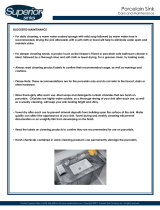GE WWA3100G is an all-electric clothes washer with a heavy-duty, extra large capacity that can handle big loads of laundry. It features a wide range of wash cycles and options to customize the washing process for different types of fabrics and loads, like whites, colors, delicates, and even bulky items like blankets and comforters. The washer also includes several helpful features, such as a soak cycle for heavily soiled items, a pre-treat option for stains, and a rinse-only cycle for refreshing clothes.
GE WWA3100G is an all-electric clothes washer with a heavy-duty, extra large capacity that can handle big loads of laundry. It features a wide range of wash cycles and options to customize the washing process for different types of fabrics and loads, like whites, colors, delicates, and even bulky items like blankets and comforters. The washer also includes several helpful features, such as a soak cycle for heavily soiled items, a pre-treat option for stains, and a rinse-only cycle for refreshing clothes.




















-
 1
1
-
 2
2
-
 3
3
-
 4
4
-
 5
5
-
 6
6
-
 7
7
-
 8
8
-
 9
9
-
 10
10
-
 11
11
-
 12
12
-
 13
13
-
 14
14
-
 15
15
-
 16
16
-
 17
17
-
 18
18
-
 19
19
-
 20
20
-
 21
21
-
 22
22
-
 23
23
-
 24
24
GE WWA3100G is an all-electric clothes washer with a heavy-duty, extra large capacity that can handle big loads of laundry. It features a wide range of wash cycles and options to customize the washing process for different types of fabrics and loads, like whites, colors, delicates, and even bulky items like blankets and comforters. The washer also includes several helpful features, such as a soak cycle for heavily soiled items, a pre-treat option for stains, and a rinse-only cycle for refreshing clothes.
Ask a question and I''ll find the answer in the document
Finding information in a document is now easier with AI
Related papers
Other documents
-
Hotpoint WLW5900M User guide
-
Hotpoint WLW2500BAL Owner's manual
-
Hotpoint WLW3500BBL Owner's manual
-
Hotpoint WLW3300BNL Owner's manual
-
New England Arbors VA84242 User guide
-
New England Arbors VA84242 User manual
-
New England Arbors VA68890 User guide
-
New England Arbors VA68894 User manual
-
FolkArt 5102 User manual
-
 Superior Sinks SP1811W User manual
Superior Sinks SP1811W User manual
























